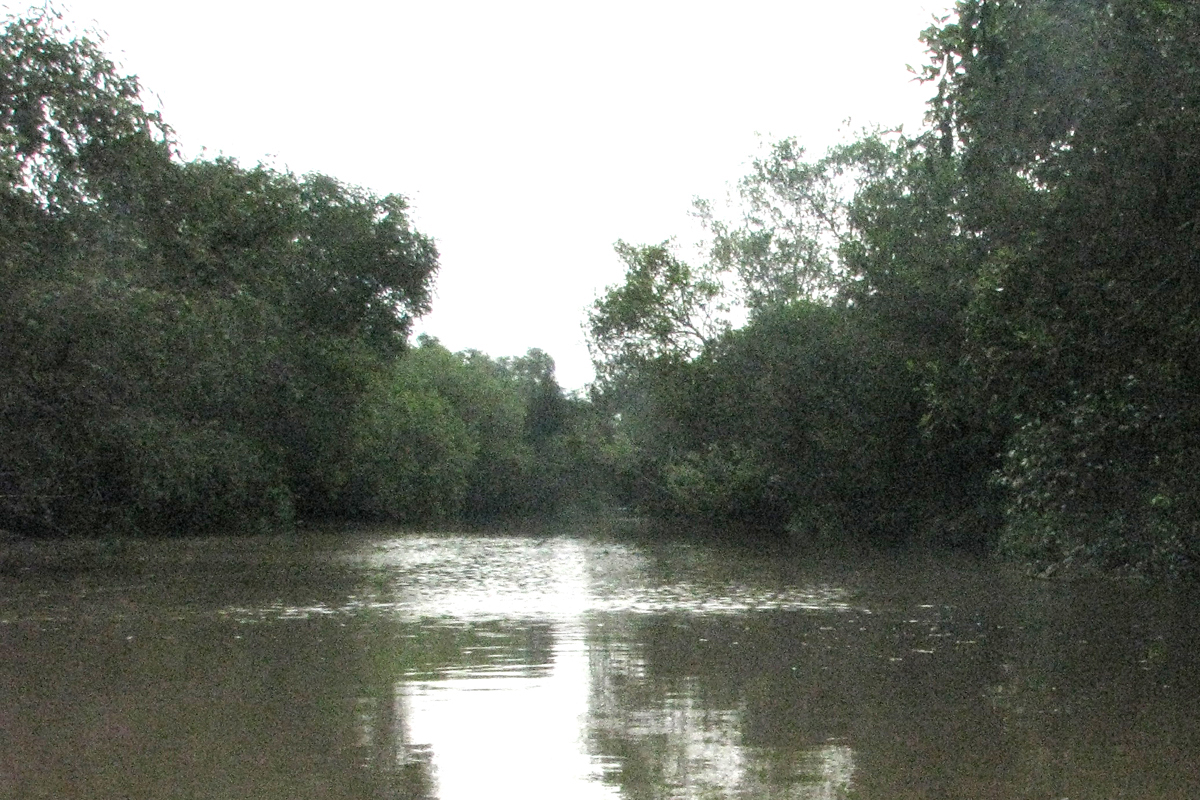Odisha villagers pin hopes of mangrove saving them from cyclone Dana’s fury
The State Forest Department has in the meanwhile kept the national park out of bounds for tourists from 23 to 25 October in view of the cyclone warning.
While 82 square Km area in Bhitarkanika is densely mangrove-infested while 95 square km area has moderate mangrove forest. 54 square km patches are sparsely covered under mangrove forest.

Photo: SNS
Residents in villages on the close periphery Bhitarkanika national park exude optimism that the rich mangrove forests cover along the wetland sites of the park would turn into savior for them amid weathermen apprehension of cyclonic fury making landfall in and around the national park region.
The mangrove will save us yet again. The coastal woodland has the capacity to withstand the wind velocity up to 20 kilometer per hour. We panicked. Still we are hopeful that nature will arrest the stormy onslaught this time, said Nrusingha Behera, a local of Nalitapatia village lying close to the village.
Advertisement
There are definite signs of a cyclone striking our area. It has been raining heavily since morning hours. We are experiencing gusty speed. Everybody here is confined indoors either in homes or cyclone shelters. The forest cover around had protected us with minimal damage in past cyclones. We pray forest withstands the onslaught this time also, said Ganesh Chandra Gudia of park-side Talchua village
Advertisement
It’s pertinent to note here that the national park had withstood the onslaught of cyclone Amphan that had barreled through coastal Odisha in May last year.
The lush-green luxuriant mangrove cover often acts as a protective barrier against cyclone and tidal surge. It is because of the mangroves that the coastal hamlets lying on the fringes of the national park could not be impacted by cyclones in the past. In the 1999 super cyclone, the area was also saved as the species bore the onslaught of gusty wind. The mangrove is a proven and time-tested natural barrier against tidal surge and cyclones in these parts.
Mangrove forests with its intricate root system stabilize the coastline, reducing erosion from storm surges, currents, waves, and tides, said Divisional Forest Officer, Rajnagar Mangrove (wildlife) Forest Division, Bikash Ranjan Dash.
The flora and fauna of the park were unharmed due to the Amphan cyclone last year. The villages on the close periphery of the national park were also saved as the mangrove cover acted as buffer zone in protecting the human settlements, added DFO Dash.
Bhitarkanika is one of the richest storehouses of mangrove genes. Researchers have come across 11 of the 70 mangrove species, which were at elevated threat of extinction in the world, in Bhitarkanika. Mangroves are regarded as natural barriers against the tidal surge and cyclones. Because of its rich mangrove cover, cyclonic storms from time to time have failed to make inroads into the wetland sites.
Odisha is endowed with a reserve of a mangrove forest area of 231 square kilometer with a major chunk lying in Bhitarkanika. It stands second only to Sundarbans in West Bengal. Besides Bhitarkanika in Kendrapara, the districts of Balasore, Bhadrak, Jagatsinghpur and Puri district are also home to mangrove, otherwise known as coastal woodland.
While 82 square Km area in Bhitarkanika is densely mangrove-infested while 95 square km area has moderate mangrove forest. 54 square km patches are sparsely covered under mangrove forest.
Advertisement